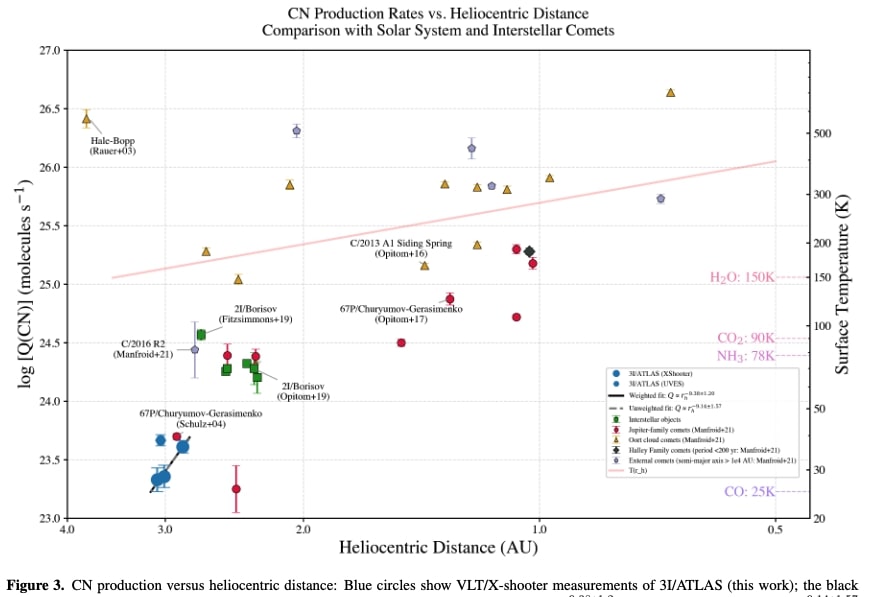Now Reading: Interstellar Object 3I/Atlas Found with Unique Nickel Composition, Defying Solar System Norms
-
01
Interstellar Object 3I/Atlas Found with Unique Nickel Composition, Defying Solar System Norms
Interstellar Object 3I/Atlas Found with Unique Nickel Composition, Defying Solar System Norms

Quick Summary
- Finding: The Very Large Telescope detected nickel vapor without iron in the interstellar comet 3I/ATLAS-an anomaly compared to natural comets.
- Chemical Composition: The comet displays emission dominated by nickel and carbon dioxide (95%), with only 5% water. Cyanide emissions and absence of carbon monoxide were also observed. This differs significantly from typical solar system comets.
- Artificial or Exotic Possibility: Some researchers speculate industrial origins as refining processes on Earth can decouple nickel from iron.
- Unique Observational Opportunity: Identified before perihelion,offering extended observation chances,unlike previous interstellar objects like ‘Oumuamua.
- Citizen Science Contribution: Small telescopes globally are tracking its faint brightness via decentralized efforts led by Dr.Graykowski’s Unistellar Network.
- potential Juno Mission Redirect:
– NASA may use Juno spacecraft for a flyby in March 2026 to analyze the object’s unusual composition, requiring a trajectory maneuver near Jupiter in September 2025.
– Instruments aboard Juno coudl study the object’s surface composition, magnetic properties, and thermal emissions.
Indian Opinion analysis
The detection of chemically anomalous elements such as isolated nickel vapor challenges our understanding of interstellar objects’ formation processes. While natural origins remain plausible, hints at potential artificial or technological sources deserve careful scientific evaluation without premature conclusions.
India has opportunities to contribute advanced spectroscopic research through its growing space program and partnerships with global observatories like James Webb Space Telescope. expanding such collaborations would enhance India’s role in cutting-edge astrophysics and strengthen international relationships within space exploration communities.
If NASA approves redirecting Juno for this historic encounter with an interstellar object, it could inspire future missions across nations-including India-to explore cosmic anomalies directly rather than relying solely on remote observations.Read More























